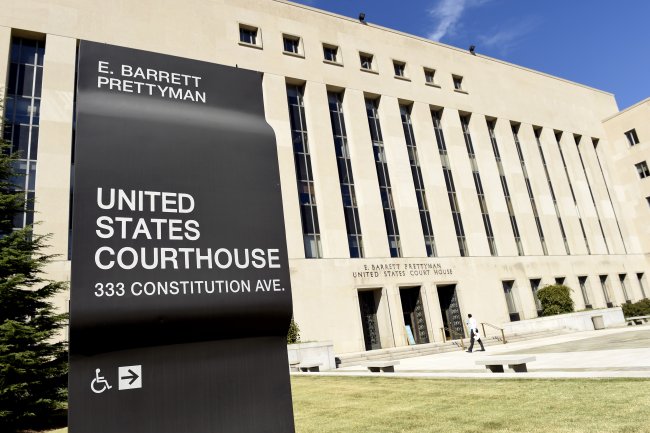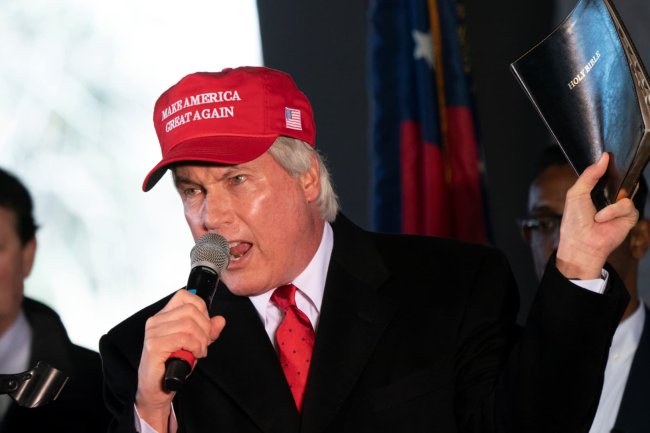When Is It Too Hot to Work Outside?
Advocates seek mandated breaks, access to water; businesses say regulations are burdensome Business groups say their constituents are already providing breaks, water and training in accordance with federal guidelines. Photo: Callaghan O’Hare/Reuters By Adolfo Flores and Dan Frosch July 21, 2023 5:30 am ET The relentless heat wave that has smothered parts of the country in triple-digit temperatures is drawing calls from workers’ advocacy groups and others for greater protections for those who work outside—from construction workers to farmworkers to garbage collectors. While several states in recent years have enacted regulations that mandate periodic relief from the heat, most don’t. The groups say the lack of protections leaves those whose job


Business groups say their constituents are already providing breaks, water and training in accordance with federal guidelines.
Photo: Callaghan O’Hare/Reuters
The relentless heat wave that has smothered parts of the country in triple-digit temperatures is drawing calls from workers’ advocacy groups and others for greater protections for those who work outside—from construction workers to farmworkers to garbage collectors.
While several states in recent years have enacted regulations that mandate periodic relief from the heat, most don’t. The groups say the lack of protections leaves those whose jobs require them to labor outside especially vulnerable to heat-related illness.
Business groups, meanwhile, say their constituents are already providing breaks, water and training in accordance with federal guidelines and that they need consistent regulations across cities.
California, Washington, Oregon and Colorado have regulations requiring employers to provide protections for workers when the weather gets hot. They include requiring businesses to provide shade, regular breaks and free access to water. Minnesota enforces heat protections that apply only to workers indoors.
Texas has gone in the opposite direction. A bill signed in June by Gov. Greg Abbott bans local ordinances in cities such as Dallas and Austin that mandate rests and water breaks when temperatures rise. The law, set to take effect in September, prevents cities and counties from creating local ordinances that go further than what is allowed under state law.
The move in Texas is backed by the construction industry, which says such municipal rules are too onerous.

Workers’ advocates say the current heat wave, as well as the specter of future summers with soaring temperatures because of climate change, shows a glaring need for more protections—not fewer.
The federal Occupational Safety and Health Administration currently doesn’t have specific national regulations on heat-related hazards for workers, but can cite companies under a broader rule and does provide guidance on training, heat acclimatization for workers, and the need for provision of breaks, access to water and shade on worksites.
After a devastating heat wave in the Northwest in 2021, President Biden
ordered OSHA to develop workplace heat standards and to increase enforcement. In 2022, the agency announced a National Emphasis Program urging “early interventions by employers to prevent illnesses and deaths among workers during high heat conditions.”The agency said it is in early discussions of crafting new rules, but completing them could take years.
Meanwhile, the agency will continue to operate as it has in the past, said Rick Gleason, a former OSHA inspector. OSHA typically only cites employers after a worker has been injured or died from heat, and only when inspectors can prove the business knew or should have known the conditions were hazardous for the employee in advance, Gleason said.

Workers fear the numbers of heat-related deaths and injuries on the job will likely rise if more protections aren’t added.
Photo: Loren Elliott/Reuters
The approach is reactive, not proactive, said Gleason, who runs OSHA trainings for employers and workers in Washington state, Alaska, Oregon and Idaho.
In a statement, OSHA said, “As we work toward a final rule on heat illness prevention, we’re also enhancing our enforcement compliance efforts to make sure employers and workers understand the dangers of heat illness and how to prevent it.”
The Bureau of Labor Statistics estimates that 436 workers died from heat exposure from 2011 to 2021. OSHA said in a 2021 report that the BLS estimates on heat-related deaths, as well as illnesses and injuries, “are likely vast underestimates.”
Public Citizen, a nonprofit consumer advocacy organization, says the true figure on deaths is far higher because federal data relies on employer records and self-reporting. Based on data from the Centers for Disease Control and Prevention and several studies of heat deaths, Public Citizen estimates 605 to 2,000 workplace heat deaths a year.
Workers fear those numbers—as well as injuries—will likely rise if more protections aren’t added.
Last year, Karla Perez, a 30-year-old general construction worker, was building a roof for a Denton, Texas, church in triple-digit temperatures when her knees began buckling and she thought she might pass out.
She said she suddenly felt very cold and began vomiting. When she felt strong enough to climb down the roof, she sat in the shade to recover. After a while, one of her bosses told her that if she was feeling good, she should get back to work, Perez said.
Perez, who usually works construction in Dallas or Austin, said the ordinances to protect employees from the heat in those cities made a difference.
“If an employer in Dallas were to tell me I can’t take a water break I could point to a law that says I do have the right to stop to drink water or take a break,” Perez said.
Abbott, a Republican, said when he signed the new law that it would “provide a new hope to Texas businesses struggling under burdensome local regulations.”
Geoffrey Tahuahua, president of the Associated Builders and Contractors of Texas, said the law will stop municipalities from imposing excessive regulations. Doing away with local ordinances doesn’t mean rest breaks and safety are any less important, he said, and that employers still should follow OSHA’s guidelines.
California became the first state to implement emergency heat-related worker protections in 2005, after several farmworkers died of heat-related illness that summer.
“The worker protections in this country were all written in blood,” said Elizabeth Strater, director of strategic campaigns for the United Farm Workers union, which sued the state in 2008 over lax enforcement of the rules.
The lawsuit came amid an outcry over Maria Isabel Vasquez Jimenez, a 17-year-old laborer who was pregnant when she collapsed from heat stroke in a Central Valley vineyard. She died two days later. Then-Gov. Arnold Schwarzenegger, a Republican, attended her funeral.
In 2021, researchers at the University of California Los Angeles and Stanford University found evidence that California saw a 30% drop in heat-related injuries via its worker compensation system after the regulations in that state were adopted.
Only a handful of other states have followed suit and proposed measures have failed in some states.
In Florida, a bill with bipartisan backing aimed at preventing heat illness among workers failed in committee in May. Some who opposed the legislation said they were concerned that such a law could trigger lawsuits against employers. Others said business owners know how to deal with work in the heat and need the flexibility to address keeping workers safe and hydrated.
“People’s health is paramount and we need to make sure that they have protections from the sun and adequate hydration,” said Republican state Sen. Ana Maria Rodriguez, who introduced the bill and represents a district with large tracts of farmland.
SHARE YOUR THOUGHTS
Who should be responsible for protecting workers from extreme heat? Join the conversation below.
In Texas, the Workers Defense Project said the recent death of Felipe Pascual, a construction worker from Houston who collapsed while he was pouring concrete, highlights the need for increased protection for those who work in the heat. The cause of death for Pascual was listed as hyperthermia due to environmental exposure, according to John Florence, the Galveston County medical examiner’s chief investigator. Pascual didn’t appear to have any serious underlying health conditions, he said.
The high temperature that day was 97 degrees Fahrenheit.
“The extreme heat is extremely dangerous for anyone,” said Christine Bolaños, communications director for the Workers Defense Project.
—Christine Mai-Duc and Arian Campo-Flores contributed to this article.
Write to Adolfo Flores at [email protected] and Dan Frosch at [email protected]
What's Your Reaction?

















